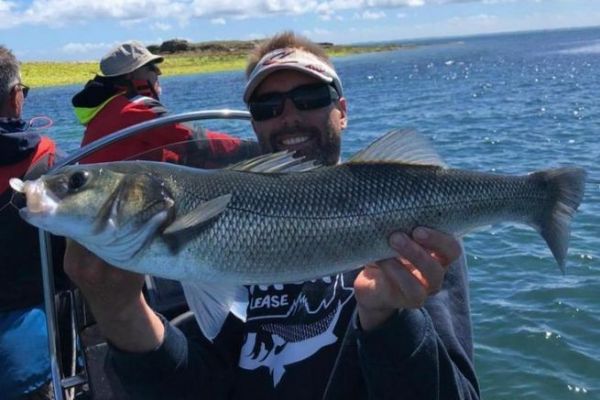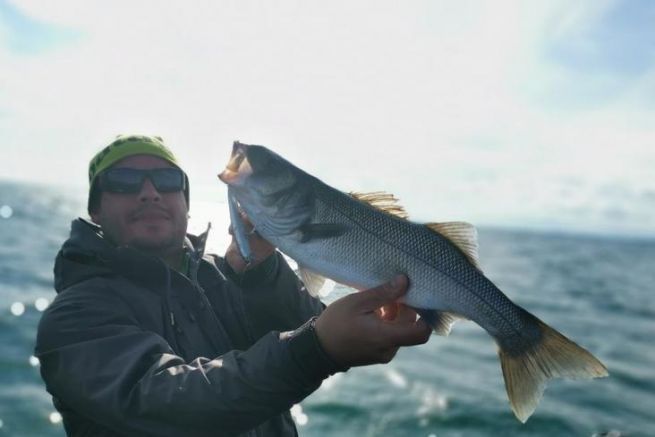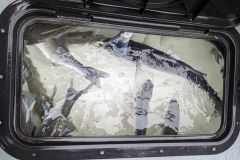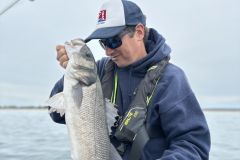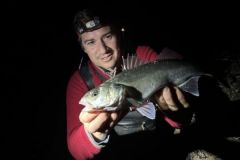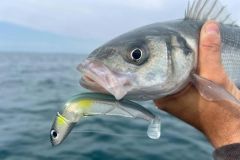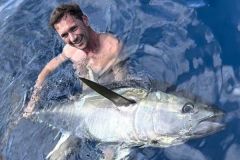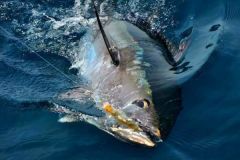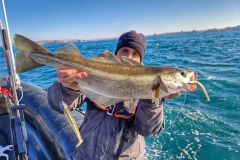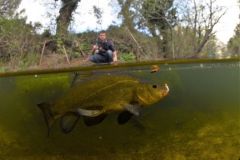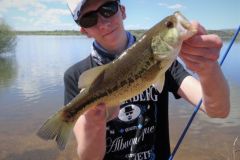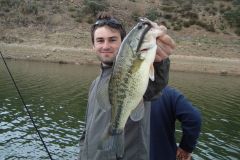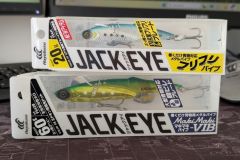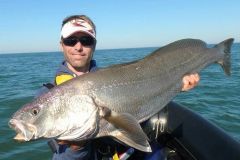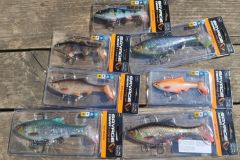The majority of swimbaits used for sea bass fishing are minnows and jerkbait minnows, which have a slender shape and a small lip at the head. Often between 9 and 13 cm in length, they can be worked linearly, jerking or twitching.
Available in floating, sinking or suspending versions, they are designed to operate at depths of between 0.80 and 1.50 m, covering the vast majority of situations.
However, in certain situations, depending on the topography of the fishing spot and the mood of the fish, you can use other types of swimming fish, often from freshwater fishing.
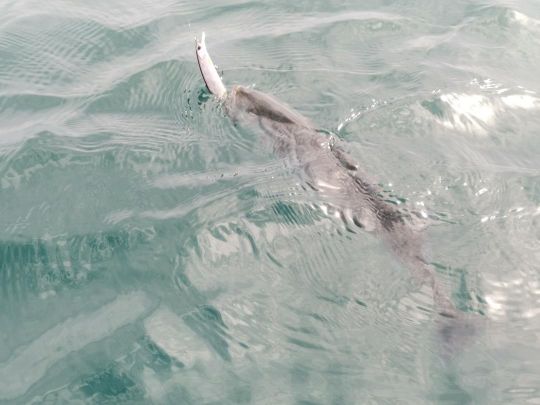
Longbill minnows
The longbill minnows are in the same vein as their predecessors, but with a longer lip that allows them to move at greater depths. You'll find models that go down to 2.5 or 3.5 m and can be line-led, twitch-led or jerk-led. These lures pull very little through the rod, making them pleasant to use and mirroring the general profile of common sea bass prey.
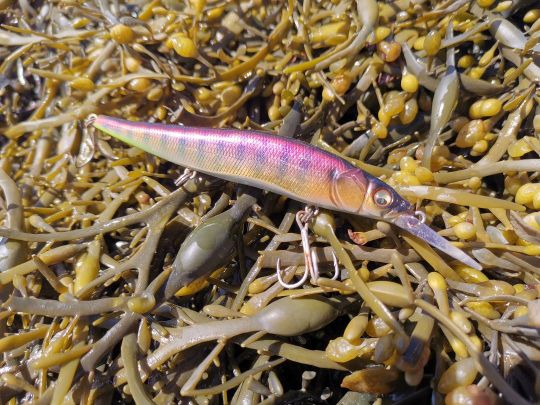
Crankbaits
Crankbaits are also bibbed swimming fish, but differ from minnows in that they are much stockier and always float. Short and paunchy, their lip is often wide and its inclination determines the depth at which they swim.
Crankbaits send out much stronger signals to predators.
Crankbaits can be animated in a linear fashion like their predecessors, but the secret of their use lies in their large lip (Deep Diver crankbaits) and their swimming depth. The wide lip acts like a deflector, allowing the lure to ricochet off pebbles and obstacles without snagging. So it's best to choose a crankbait that swims deeper than the depth of your spot. Then, when you retrieve, you'll feel the bib bang against the substrate, arousing the curiosity of nearby bass. If the spot is very crowded, pause during this shock and your (floating) lure will rise through the layer of water to pass over it.
This wide lip also has the particularity of bringing your lure down very quickly to the desired depth, so in estuaries in particular, the crankbait is ideal for fishing steep banks from a boat.

Wakebaits
The wakebait has the same general appearance as a crankbait, but with a shorter, square-shaped lip positioned vertically. This allows it to move at very shallow depths. Depending on speed, it will swim 20 to 30 cm below the surface. For prospecting oyster beds, these lures are particularly effective as they displace a lot of water and make bass react from a distance.
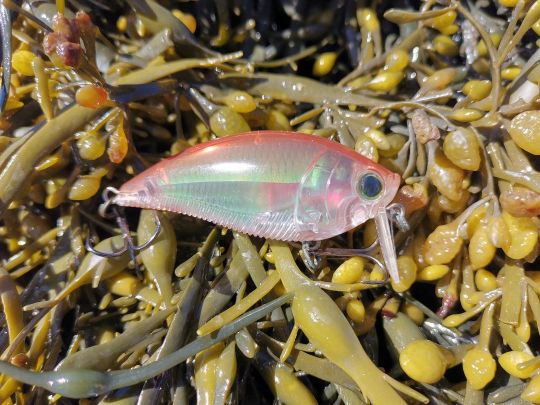
Lipless
The lipless lure is widely used in freshwater but almost unknown to sea anglers. Often short (5 to 7 cm) and fitted with beads, it has no lip. Its attachment is on the back and it emits powerful vibrations when retrieved, often triggering predators' aggression.
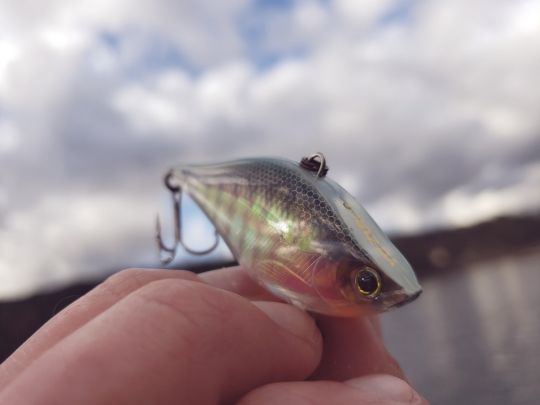
Lipless can be launched at very long distances, enabling you to quickly prospect a large area. There are two main ways to use them:
- After letting it sink to the desired depth, you can retrieve it linearly on the reel, often fast enough to trigger the aggressiveness of the bass. You'll feel it vibrate in your rod.
- The second, slower, animation consists of pulling, with varying degrees of amplitude, and letting it sink back into the water.
The lipless is very similar to the vibrating blade in terms of profile, stroke and animations, but often has the particularity of being noisy.

 /
/ 